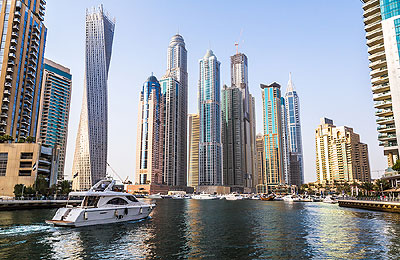
Gulf growth drawing global funds to set up shop
By Nadia Saleem, June 20, 2014
International asset management firms are showing renewed interest in setting up in the Gulf, drawn by markets performing better than those in more volatile emerging economies.
Despite high incomes and large sovereign wealth funds, countries such as the United Arab Emirates, Qatar and Saudi Arabia have traditionally been serviced from London or New York.
Recently, some managers are reassessing how they cover the region and are establishing a local presence as business increases.
Nomura Asset Management, one of Asia's biggest managers, opened its first Middle East office in Dubai this month with five staff. Nomura's business in the region has doubled in the last five years.
Lazard Asset Management poached the local ING Investments team of six in February to cover MENA from a new Dubai base, adding to its operations in Bahrain. The U.S. firm has $176 billion in global assets under management (AUM).
Ashmore Group, which has around $70 billion of AUM globally, has hired a head of MENA ahead of opening its first regional office, market sources said, with Dubai and Riyadh touted as possible locations for it. Ashmore declined to comment when contacted by Reuters.
AUM in the Middle East and Africa are expected to increase by 2.5 times in the 2012-2020 period to $1.5 trillion, according to consultancy PwC, with only Latin America expected to grow faster.
"You can't ignore the growth story that you're seeing, from Saudi Arabia, the UAE and from Qatar," said Daniel Rudd, Dubai-based head of Middle East and Africa at HSBC Global Asset Management.
Still, the international firms coming to the region are thus far making little investment, usually with just one office and a small staff reflecting the market's relatively modest size.
While Nomura now manages $7 billion of Middle East and North African (MENA) assets, for example, that remains just a small slice of its $300 billion in AUM globally.
MSCI UPGRADES
Another factor drawing foreign asset managers is an upgrade by index compiler MSCI which raised the UAE and Qatar to emerging market status at the end of May.
Previously, many had given less weighting to the region because it made up only a small percentage of their global asset bases. Middle East and Africa accounted for just 0.94 percent of the $64 trillion of global AUM at the end of 2012, PwC says.
The upgrade is one of a number of factors which have created "the perfect cocktail" for increased foreign investor interest in regional equities in recent months, according to Nina Lagron, Paris-based manager of Amundi Asset Management's MENA fund, which is concentrated in Saudi equities.
There has been a bull run on Gulf bourses with data for the year to May 31 showing the value of exchanges in Abu Dhabi and Qatar grew by almost 50 percent. Dubai fared even better, growing by 115 percent.
In contrast, other emerging markets such as Thailand struggled over the same period, hampered by political turbulence, military interventions and currency pressures. Thailand's SET index fell 9.4 percent.
Underpinning the Gulf's strength has been strong economic growth, with GDP growth this year in the six Gulf Cooperation Council countries - Saudi Arabia, UAE, Kuwait, Qatar, Oman and Bahrain - forecast at between 3 and 6.1 percent.
Helping spur economic activity are major infrastructure projects, including Qatar's preparation to host soccer's 2022 World Cup finals.
MARKET RISKS
Despite the positives, Gulf markets still have shortcomings.
Regional markets tend to be dominated by retail investors and foreign ownership limits remain, although some of these have been raised in UAE and Qatar due to MSCI's upgrade of them to its emerging market index.
Amundi's Lagron said that despite the hike in limits, what foreign funds can buy in the region is very restrictive because allocations for foreign investors are already filled.
The predominance of retail investors also makes Gulf markets prone to high volatility and knee-jerk reactions. Dubai's index shed half of its value during the 2008 financial crisis.
For local funds, more big-name foreign players setting up locally means increased competition. MENA fund managers often charge higher subscription, redemption and performance fees because they can't spread their costs across a large client base like international players.
In response, some local funds have sought tie-ups with international names to expand their product offerings.
Dubai's Emirates NBD Asset Management, for example, signed a deal with Jupiter Asset Management in December.
Others are opting to domicile their funds overseas in place such as Luxembourg.
Of the approximately 870 active funds offered by Middle Eastern firms, around 78 are domiciled outside the region, according to data compiled from Zawya, a Thomson Reuters unit.
Fee structures are also starting to evolve.
Some MENA managers have switched to performance fees based on how a fund performs over a number of years and not just on an annual basis. Others are splitting the subscription fee with half to be paid initially and the rest when the fund liquidates.
There is scope for growth in services, too, as the fixed income market remains small and illiquid and there are no index-tracking funds and few mutual funds. – Reuters







